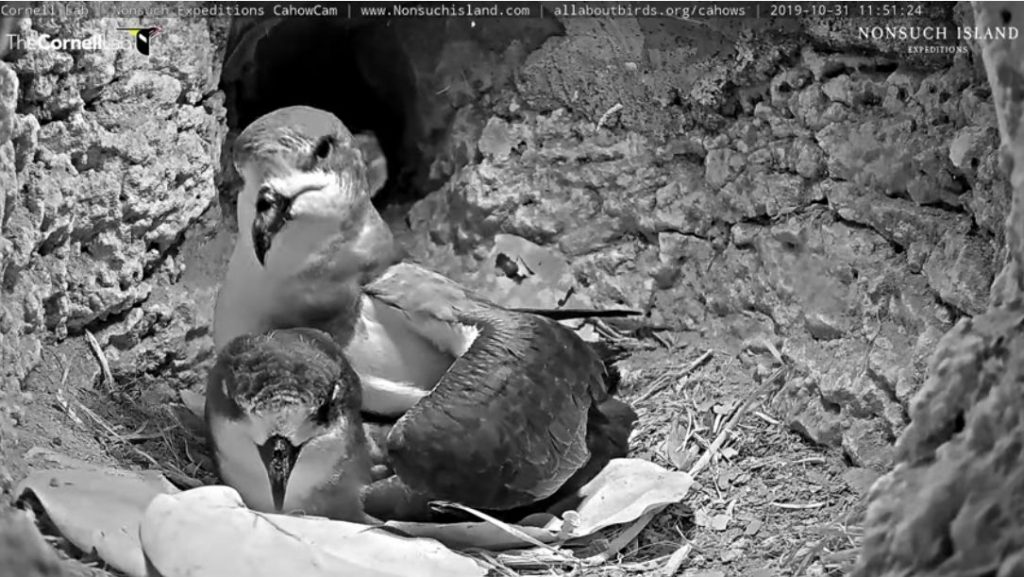
November is courtship time for one of the rarest seabirds on earth.
The Bermuda petrel (Pterodroma cahow) or cahow (pronounced ka-HOW) ranges across the Atlantic Ocean, returning to land only once a year to court and breed at Bermuda.
Cahows nest in dark burrows which they access only at night, so secretive that they were presumed extinct until 1951 when the last 17-18 pairs were discovered on an isolated Bermuda island.
Every year the odds are against an egg becoming an adult. However the birds’ long breeding lives, 30-40 years, ensure the species will survive as long as there are safe places to nest — and that’s the rub. Rats were eradicated from their breeding colonies but many of the burrows are on islands threatened by hurricanes and sea level rise.
Since 2001 the Cahow Recovery Program has been setting up safe breeding burrows on Nonsuch Island and translocating a few pre-fledgled birds to the burrows in hopes they will return there to breed when they reach maturity at 3-6 years of age. So far so good. There are now 15 pairs on Nonsuch, two of which use burrows equipped with live streaming Cahow cams under infrared light.
November is the time to watch the cameras at Cornell Lab’s Bermuda Petrel Cams. The pairs return to their burrows, prepare the nest, court and copulate. In the video below a pair touches beaks and preens in the courtship behavior called allopreening.
Watch the Cahow cams this month, especially at night. The birds are most active on the darkest nights of the New Moon.
Cahows leave their burrows in December, then the female returns in January to lay her single egg. If all goes well a chick will fledge in July.
The long process of creating and raising a single cahow chick has just begun.
p.s. Here’s an amazing fact about cahows: Notice that the birds have tube-like noses. These structures take the salt out of saltwater so they can drink it. They sneeze the salt out of their noses. There are more amazing cahow facts here.
(screenshot and video from Cornell Lab’s Bermuda Petrel cams)
Thanks for the post Kate. Very interesting! Bird adaptations never cease to amaze me!